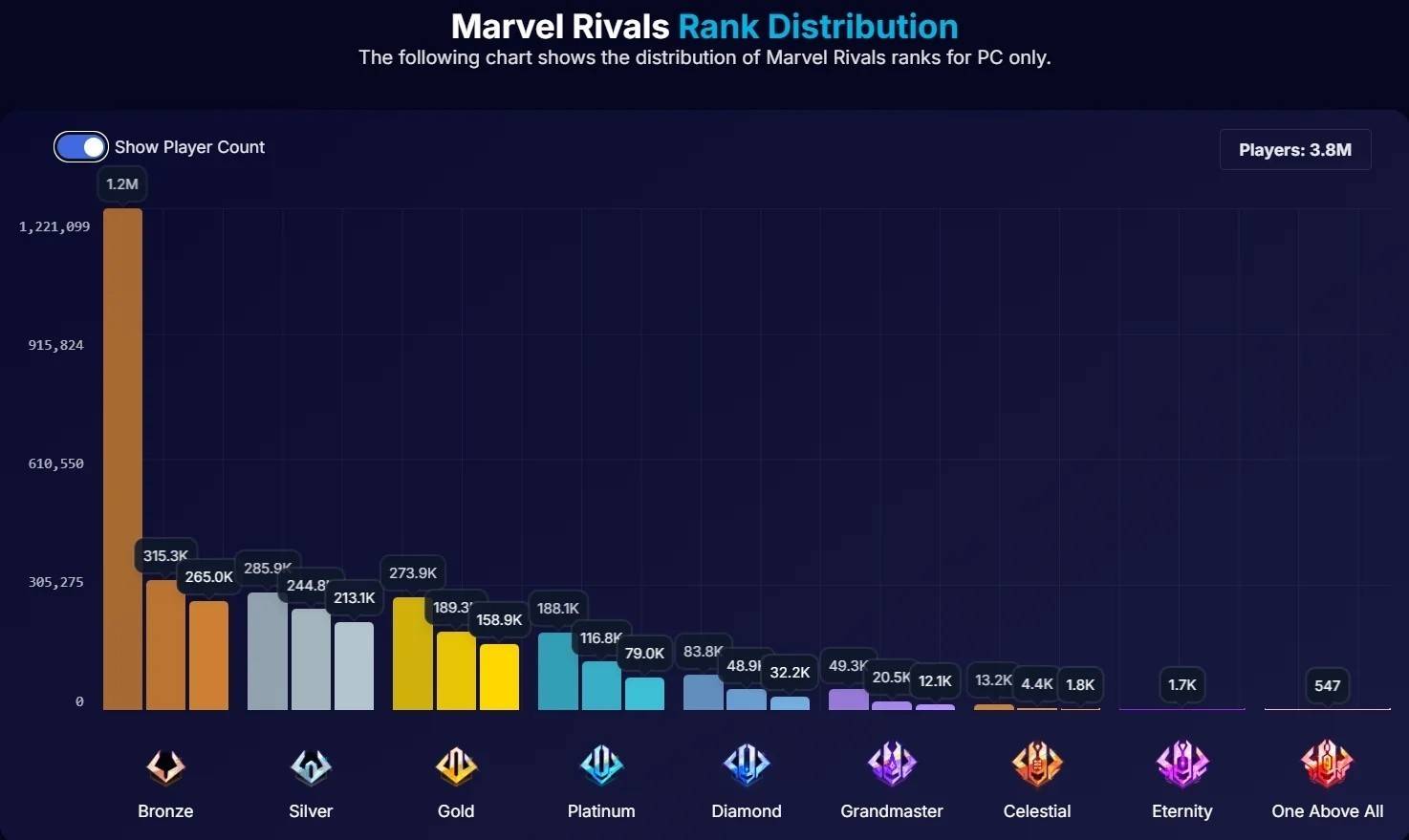Recent statistics about the rank distribution in Marvel Rivals on PC, shared across social media, have sparked both interest and concern among the gaming community. A critical point to focus on is the distribution of players within the Bronze ranks. Notably, Bronze 3 rank is automatically assigned to players upon reaching level 10, and progression beyond this requires participation in ranked matches.
 Image: x.com
Image: x.com
In most competitive games, the transition from Bronze 3 to Bronze 2 is designed to be relatively straightforward. Developers often aim for a rank distribution that follows a Gaussian curve, or bell curve, positioning the majority of players around the middle tiers, such as Gold. In this model, players at the lower ranks, like Bronze, experience a system that encourages progression toward the center, with wins typically granting more points than losses.
However, the current data from Marvel Rivals presents a stark deviation from this norm. There is a significant discrepancy, with four times more players in Bronze 3 than in Bronze 2, indicating that the rank distribution is far from Gaussian. This unusual pattern suggests a lack of engagement with the ranking system among players. The reasons for this disinterest can vary, but it's a potentially troubling sign for NetEase, the developers behind Marvel Rivals. Such a distribution may reflect issues with the game's appeal, the effectiveness of its progression system, or broader player satisfaction, all of which are crucial for the game's long-term success.















